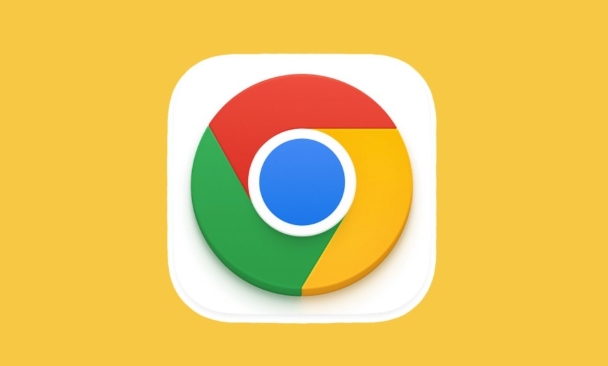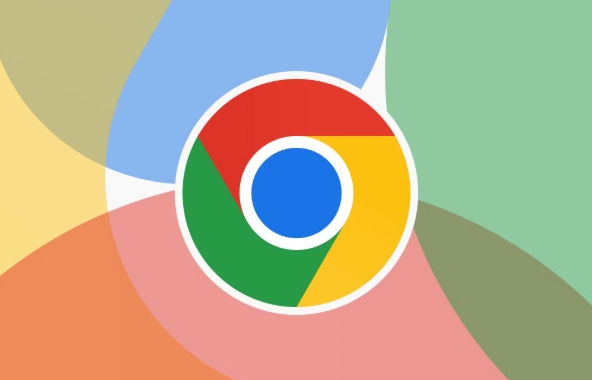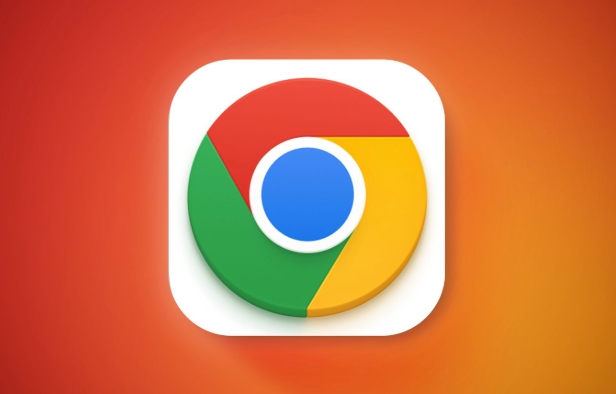Google Chrome password manager is not saving passwords
Aug 02, 2025 pm 01:47 PMEnsure Chrome’s “Offer to save passwords” is enabled in Settings > Autofill and passwords > Password Manager. 2. Sign in to your Google account and turn on Sync with Passwords included under Sync and Google services. 3. Disable conflicting extensions like third-party password managers or ad blockers at chrome://extensions/ and test after restarting Chrome. 4. Clear corrupted data by removing sites set to “Never save” in Password Manager settings or clear browsing data including cookies. 5. As a last resort, reset Chrome to default settings via Settings > Reset settings, which restores default configurations without deleting synced passwords or bookmarks. The issue is typically resolved by adjusting settings, enabling sync, or disabling interfering extensions, and testing on standard sites like Gmail can help confirm if the problem persists.

If Google Chrome’s password manager isn’t saving passwords, it can be frustrating—especially if you rely on it for convenience and security. The issue usually stems from settings, extensions, or browser state. Here’s how to troubleshoot and fix it.

? 1. Check if Chrome is Allowed to Save Passwords
Chrome has built-in settings that control whether passwords are saved.
Steps:

- Open Chrome and click the three dots in the top-right corner.
- Go to Settings > Autofill and passwords > Password Manager.
- Make sure Offer to save passwords is turned on.
- Also check that Auto sign-in is enabled if you want automatic login.
?? Note: If you're in Incognito mode, Chrome won’t save passwords by default.
? 2. Ensure You're Signed In to Chrome (Sync Enabled)
If you're not signed into your Google account, or sync is off, passwords may not save properly across devices—or sometimes at all.

What to do:
- Click the profile icon in the top-right of Chrome.
- Make sure you’re signed in.
- Go to Settings > You and Google > Sync and Google services.
- Turn on Sync and ensure Passwords is included in the synced data.
? Tip: Sync helps save and restore passwords across devices. If it’s off, changes may not persist.
? 3. Disable Conflicting Extensions
Some browser extensions—especially password managers like LastPass, 1Password, or ad blockers—can interfere with Chrome’s built-in password saving.
Try this:
- Go to chrome://extensions/
- Temporarily disable all extensions (especially third-party password managers).
- Restart Chrome and try logging into a site again.
- See if Chrome now prompts to save the password.
If it works, re-enable extensions one by one to find the culprit.
? 4. Clear Corrupted Password Settings or Data
Sometimes saved settings or corrupted autofill data prevent new passwords from being stored.
Fix:
- Go to Settings > Autofill and passwords > Password Manager.
- Click Settings (next to "Password Manager").
- Under Addresses and more, click Manage passwords.
- Look for any site where Chrome is set to Never save and remove it from the list.
- You can also try turning password saving off and back on.
Alternatively:
- Go to chrome://settings/clearBrowserData
- Clear cookies and site data (be cautious—this logs you out of sites).
- Try logging in again and see if Chrome offers to save the password.
? 5. Reset Chrome Settings (Last Resort)
If nothing works, reset Chrome to default settings. This won’t delete bookmarks or saved passwords (if synced), but it clears settings that might be causing conflicts.
How:
- Go to Settings > Reset settings > Restore settings to their original defaults.
- Confirm the reset.
- Restart Chrome and test password saving again.
Final Notes
- Chrome may not prompt to save passwords if:
- The website uses unusual login forms (e.g., custom JavaScript logins).
- You’ve previously clicked “Never” when asked to save a password.
- The form lacks proper
nameoridattributes on input fields.
? Try testing on a common site like Gmail or Twitter to confirm if the issue is site-specific.
Basically, most password-saving issues in Chrome come down to settings, sync, or extension conflicts. Go through the steps above one by one—it’s usually a quick fix.
The above is the detailed content of Google Chrome password manager is not saving passwords. For more information, please follow other related articles on the PHP Chinese website!

Hot AI Tools

Undress AI Tool
Undress images for free

Undresser.AI Undress
AI-powered app for creating realistic nude photos

AI Clothes Remover
Online AI tool for removing clothes from photos.

Clothoff.io
AI clothes remover

Video Face Swap
Swap faces in any video effortlessly with our completely free AI face swap tool!

Hot Article

Hot Tools

Notepad++7.3.1
Easy-to-use and free code editor

SublimeText3 Chinese version
Chinese version, very easy to use

Zend Studio 13.0.1
Powerful PHP integrated development environment

Dreamweaver CS6
Visual web development tools

SublimeText3 Mac version
God-level code editing software (SublimeText3)
 How to stop Chrome from updating in the background on Mac
Jul 21, 2025 am 12:41 AM
How to stop Chrome from updating in the background on Mac
Jul 21, 2025 am 12:41 AM
To prevent Chrome from automatically updating on Mac, it can be done by disabling update services, modifying permissions, and restricting network access. 1. Use terminal commands to disable the GoogleSoftwareUpdate daemon to prevent background updates; 2. Modify update directory permissions to prevent Chrome from starting the update process by itself; 3. Restrict Chrome's outbound network connection through system firewall or third-party tools to further eliminate update requests. Using these methods in combination can effectively prevent Chrome from being automatically updated.
 How to fix Chrome's spell checker not working
Jul 20, 2025 am 12:03 AM
How to fix Chrome's spell checker not working
Jul 20, 2025 am 12:03 AM
When Chrome spelling check fails, you can troubleshoot and fix it by following the following steps: 1. Confirm that the "Use Spelling Check" function is enabled and check whether the corresponding language is enabled in the language settings; 2. Adjust the input language order, delete the redundant language, and ensure that the main language enables spelling check; 3. Close possible conflicting extensions, especially syntax or translation plug-ins; 4. Update Chrome to the latest version and check the operating system updates. If it still doesn't work, try resetting Chrome settings.
 How to manage and view saved passwords in macOS Keychain?
Jul 19, 2025 am 01:55 AM
How to manage and view saved passwords in macOS Keychain?
Jul 19, 2025 am 01:55 AM
View and manage saved passwords in macOS, which can be operated through the Keychain Access app. The specific steps are as follows: 1. Open "Keychain Access", select "Login" keychain, double-click the target project and check "Show Password" to view; 2. Right-click the password when exporting the password, select "Export", save it as .keychain or .p12 format, and set a protection password; 3. When forgetting your password, you can search in the keychain to confirm whether it has been saved; 4. Regularly clean useless entries, add notes, set automatic locking, and enable iCloud synchronization to optimize management. When viewing and exporting, you need to pay attention to authorization and security risks to ensure that information is properly kept.
 How to stop Chrome from automatically opening PDF files
Jul 21, 2025 am 12:09 AM
How to stop Chrome from automatically opening PDF files
Jul 21, 2025 am 12:09 AM
To let Chrome download directly instead of opening it when clicking on the PDF link, 1. Enter chrome://settings/content/pdfDocuments to check "DownloadPDFfilesinsteadofautomatically opening theminChrome"; 2. Check whether there are plug-ins such as Lightpdf or Smallpdf interfering behavior, you can try to disable the test; 3. You can use the developer tools to copy the link and paste the new tag to trigger the download. The above methods can be selected according to the situation.
 How to fix screen tearing when scrolling in Chrome
Jul 25, 2025 am 12:55 AM
How to fix screen tearing when scrolling in Chrome
Jul 25, 2025 am 12:55 AM
The screen tear occurs when the Chrome browser scrolls, which is usually caused by the out-of-synchronization of rendering and refresh. The solutions are as follows: 1. Ensure that hardware acceleration is enabled, you can manually check the settings and restart the browser; 2. Forcefully enable Compositor and related options to optimize rendering; 3. Check the display refresh rate, use single-screen testing, and enable VSync or adaptive synchronization technology on supported devices; 4. Update the graphics card driver or replace the display interface such as using the DP interface. It is recommended to start the troubleshooting with simple steps and gradually adjust to find the best configuration.
 How to fix Chrome profile sync getting stuck in setup
Jul 25, 2025 am 01:10 AM
How to fix Chrome profile sync getting stuck in setup
Jul 25, 2025 am 01:10 AM
The problem of Chrome sync stuck can be solved through the following steps: 1. Check the network connection and Google account status to ensure normal access; 2. Log out and log in to the Chrome account again; 3. Clear the synchronized data and restart the browser; 4. Reset Chrome settings; 5. Try the traceless mode or new user profile. Sequentially checking can effectively restore the synchronization function.
 How to fix Chrome opening new windows instead of tabs
Jul 26, 2025 am 01:29 AM
How to fix Chrome opening new windows instead of tabs
Jul 26, 2025 am 01:29 AM
1. Check whether the shortcut attribute has additional parameters and delete it; 2. Clear cache and switch startup settings, or create new user information; 3. Extend the impact and disable the problem plug-in through traceless mode. Chrome pops up new windows instead of tabs usually due to exceptions in shortcut parameters, cache configuration conflicts, or third-party extension interference. Check and adjust the corresponding settings in turn to resolve.
 Chrome keeps opening new tabs by itself
Jul 22, 2025 am 12:22 AM
Chrome keeps opening new tabs by itself
Jul 22, 2025 am 12:22 AM
The problem of Chrome automatically popping up new tabs is usually caused by malicious extensions, advertising scripts, or browser hijacking. The solutions are as follows: 1. Check and uninstall suspicious extensions, especially ad-class plug-ins; 2. Clear browser caches and cookies to eliminate data corruption; 3. Check whether the homepage and default search engine settings have been tampered with and manually corrected; 4. Use antivirus software such as WindowsDefender or Malwarebytes to scan and clear potential malware; 5. Finally, try resetting Chrome settings to restore the default configuration. Troubleshooting in this order can effectively solve most abnormal labeling problems.






